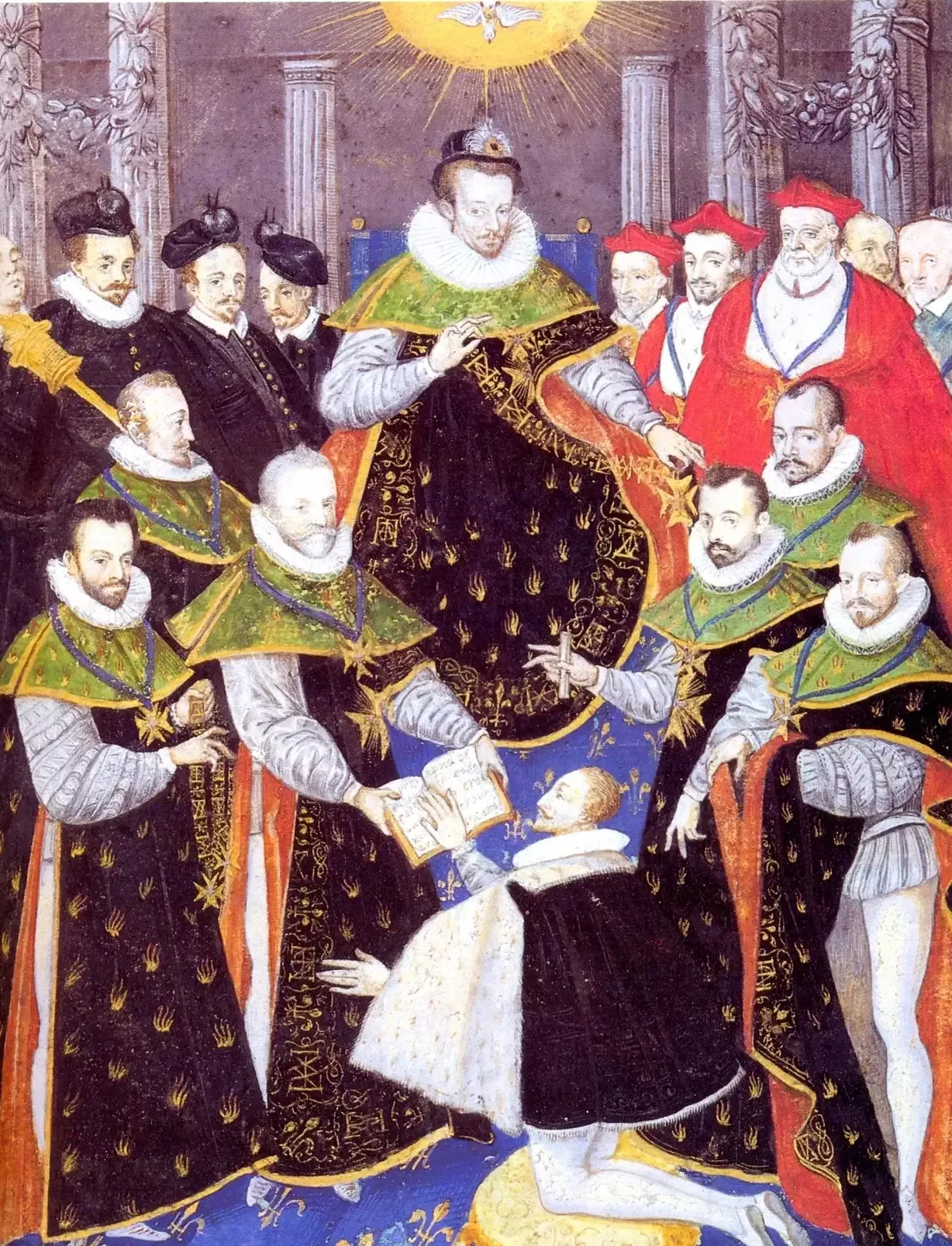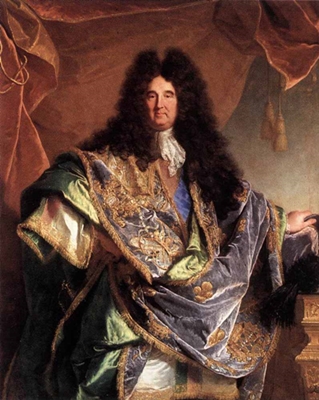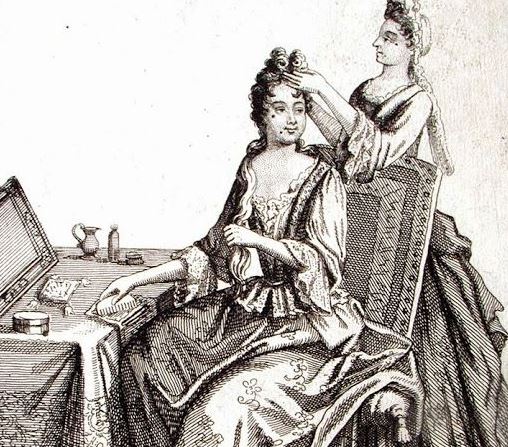L’ordre du Saint-Esprit
The Ordre du Saint-Esprit – Order of the Holy Spirit – was the senior chivalric order of France. It was not the oldest one, but the most prestigious one and founded by Henri III in 1578.

Before the Ordre du Saint-Esprit was created, the senior order of chivalry in France was the Ordre de Saint-Michel, which dates back to 1496. Membership to the Ordre de Saint-Michel was in first restricted to a small number of people, the most powerful nobles and princes, but by the start of Henri III’s reign there were hundreds of members, ranking from King to simple bourgeois gentleman.
Henri III saw this as a devaluation of the Ordre de Saint-Michel and decided to create a new chivalric order with better membership requirements. On 31 December in 1578, Henri III created the new Ordre du Saint-Esprit and dedicated it to the Holy Spirit to commemorate his two Pentecost-miracles: the fact that he was elected King of Poland on Pentecost 1573 and inherited the throne of France on Pentecost 1574.
To finance the Ordre du Saint-Esprit and its headquarter at the Couvent des Grands-Augustins, a tax called marc d’or was established.
This new order was the first order of the French monarchy and under direct control of the monarch, because the King was the Souverain Grand Maître of the order. The King decided to was admitted to the order and who not. According to the regulations, all members had to be Catholic with a hereditary nobility dating back at least to their great-grandfather. The Dauphin, and eventual male siblings, were members from birth on, but were not officially received into the order until they reached their twelfth year. Princes du Sang – Princes of the Blood – could be admitted once they were sixteen. Princes étranger – Foreign Princes – had to be at least twenty-five years old. All other members had to be at least thirty-five years old in order to be admitted.

The order was structured into four ranks: the King as Souverain Grand Maître at the very top. Followed by the Commandeurs, consisting of eight men of the Church. Originally the Commandeurs had to consist of four cardinals or archbishops and four bishops, but this rule was later a bit relaxed and the eight Commandeurs could be either cardinals or archbishops or bishops. Then there were the Commandeurs-Officiers, who were the highest officers of the order and carried the offices of chancelier et garde des sceaux; prévôt et maître des cérémonies; grand trésorier and greffier. Last but not least, there are the Chevaliers, who were chosen among the highest ranking nobility of the Kingdom and whose number was limited to one-hundred.
All of the Chevaliers de Ordre du Saint-Esprit were also Chevaliers de Ordre de Saint-Michel, before their reception into Ordre du Saint-Esprit and thus carried the title Chevaliers des ordres du Roi. While the Commandeurs, being ecclesiastical, could not be Chevaliers de Ordre de Saint-Michel.
The Commandeurs-Officiers did not need to be of a noble linage, just to be noble. Thus Louis XIV used this to reward newly ennobled gentlemen, like Colbert and Louvois, or the rich financier Antoine Crozat, who had been made Marquis du Chatel. Louis XV used this for Abel-François Poisson de Vandières, the brother of Madame de Pompadour.

The symbol of the order is the croix de l’Ordre du Saint-Esprit. It is a Maltese Cross, with fleur-de-lis and a dove representing the Holy Spirit in the centre. All edges are rounded, the eight rounded corners represent the Beatitudes, the twelve petals represent the Apostles and the four fleur-de-lis represent the Gospels. The cross is golden, enamelled branches of green and edged with white. The dove is shown in a descending manner, with spread out wings. On the opposite side of the cross, is a medallion of the Ordre de Saint-Michel. This cross was usually worn on a blue riband, called the Cordon Bleu and its wearers nicknamed Les Cordons Bleus. As time passed, this pale blue riband started to be associated with things of “high-class”, since its wearers were all of a “high-class”. The term Cordon Bleu was thus applied to other things, like high-class sport events or fine cuisine. In case of cooking, it is said that the term Cordon Bleu in cooking was inspired by the lavish fêtes of the Chevaliers de Ordre.
During the ceremonies of the Ordre, the croix was worn on a necklace with links of gold fleur-de-lis and white enamelled links with the letter H, in honour of the founder, by the Commandeurs and Commandeurs-Officiers. There were various ceremonies of the Ordre, but the reception of new members always took place on December 31 and for this special ceremony, a sort of small catalogue was published with the list of the names of the new Chevaliers and a description of the ceremony. It always was a huge social event and caused some controversy in some cases, because not everyone was always happy with who got promoted to the Ordre… and thus received a 3000 livre pension from the crown.

On those occasions, the Chevaliers wore a long black velvet mantle, richly embroidered with flames of red and gold, with the magnificently embroidered round collar. Special design rules applied to this garment, it was 4,22 m long and 2,96 m wide. Featured 237 flames, 18 Hs and 18 fleur-de-lis and 11 trophies of weapons. This mantle opened on the right side and the shoulders were covered by a pale green ermine cape. Mantle and cape were lined in a bright mix of yellow and orange satin. Below the mantle, a white coat, embroidered with the croix on the left breast, was worn, along with a waistcoat and puffed breeches, both richly embroidered with silver.
The reception ceremony lasted three days. Novice-Chevaliers wore a suit of white and silver, with a black hat featuring white feathers and a short black cloak. They were received by the King and then swore to defend him and the Ordre, after which the King clothed them in the grand mantle and necklace of the Ordre. (If you happen to visit the Louvre, you can behold a set of those mantles and necklaces from the 17th century in the Salle de l’ordre du Saint-Esprit, Departement for decorative arts, room 28. You have to pay close attention though, because they are well-hidden behind special dark glass for their preservation and it’s easy to miss them, because their glass-home looks a bit like a black wall.)
The Ordre du Saint-Esprit was officially abolished in 1791 by the Revolution government, then reestablished in 1814 by Bourbon Restoration. Just to be abolished again following the July Revolution in 1830. Since then it is a sort of French dynastic order and worn by he Orléanist and Legitimist pretenders to the throne of France, who also continue to promote new members to the Ordre.





